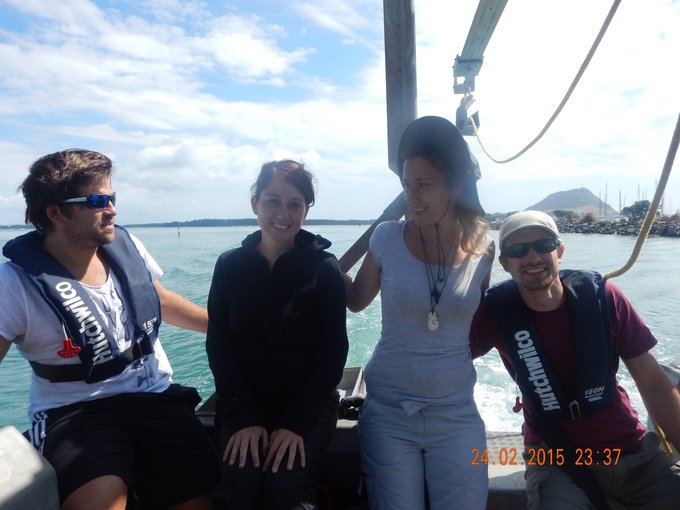- Home
- ...
- INTERCOAST
- Latest News
- Archiv
- News 2015
- 16-03-2015 Project hindcast and forecast - A re...
- Project hindcast and forecast - A report by Anja Singer IC 6
INTERCOAST
Project hindcast and forecast - A report by Anja Singer IC 6
Predictive modelling of macrofauna species in the Jade Bay (North Sea, Germany) and Tauranga Harbour (Bay of Plenty, New Zealand)
SDMs are useful tools to predict potential suitable species habitats, built on statistical relations between species presences (here: characteristic macrofauna species) and environmental variables (here: high-resolution grids). Since the last decades, characteristic macrofauna species of both tidal flat ecosystems are facing strong climatic- and environmental changes, such as sea-level rise, temperature increase or harbour constructions (http://www.boprc.govt.nz, Schückel & Kröncke, 2013). The key question for this comparative study is, if characteristic species of both study areas show similar range shifts under future climatic- and environmental conditions?

Figure I: Map of Tauranga Harbour showing the 75 sampling sites (macrofauna data and environmental data for heavy metals, sediment grain size, chlorophyll-a and nutrients) (Ellis et al., 2013)

Figure 2: Northern Tauranga Harbour showing the presence of seagrass (Zostera ssp.) in 1959 (red) and 1996 (blue) (Park, 1999).
Besides the work on my own PhD project, I gained additional field work experience. Together with my (guest) working group from the University of Waikato I set up crab experiments on sandflats in order to investigate organic decomposition as a result of different treatments (Tairua, Coromandel Peninsula). Furthermore, I assisted IC5 PhD student Manuela Biondo with her survey at Tauranga Harbour, where we took grab sediment samples and recorded transects along different bio substrates with a drop camera.

Joint working group activity (University of Waikato): Setting up crab experiments in Tairua for the PhD work of Rebecca Gladstone-Gallagher; photo: Rebecca Gladstone-Gallagher.

Joint INTERCOAST activity: Sediment grab sampling and drop camera transects in Tauranga Harbour, as part of the IC5 project of Manuela Biondo (from left to right: Florian Boxberg-IC3, Anja Singer-IC6, Manuela Biondo-IC5, Tobias Kulgemeyer-IC8); photo: Anja Singer.
Schückel, U.; Kröncke, I. (2013): Temporal changes in intertidal macrofauna communities over eight decades: A result of eutrophication and climate change. Estuarine, Coastal and Shelf Science, 117, 210-218.
Ellis, J.; Clark, D.; Hewitt, J.; Taiapa, C; Sinner, J.; Patterson M.; Hardy D.; Parks, S., Gardners, B.; Morrison, A.; Culliford, D.; Battershill, C.; Hancock, N.; Hale, L.; Asher, R.; Gower, F.; Brown, E.; McCallion, A.; (2013): Ecological Survey of Tauranga Harbour, MTM report No. 13.
Park S.G. (1999): Changes in Abundance of Seagrass (Zostera ssp.) in Tauranga Harbour from 1959-96; Environment BOP, Environmental Report 99/30, Nov. 1999.
Bay of Plenty Regional Council: http://www.boprc.govt.nz/sustainable-communities/climate-change/ (12.03.15).


